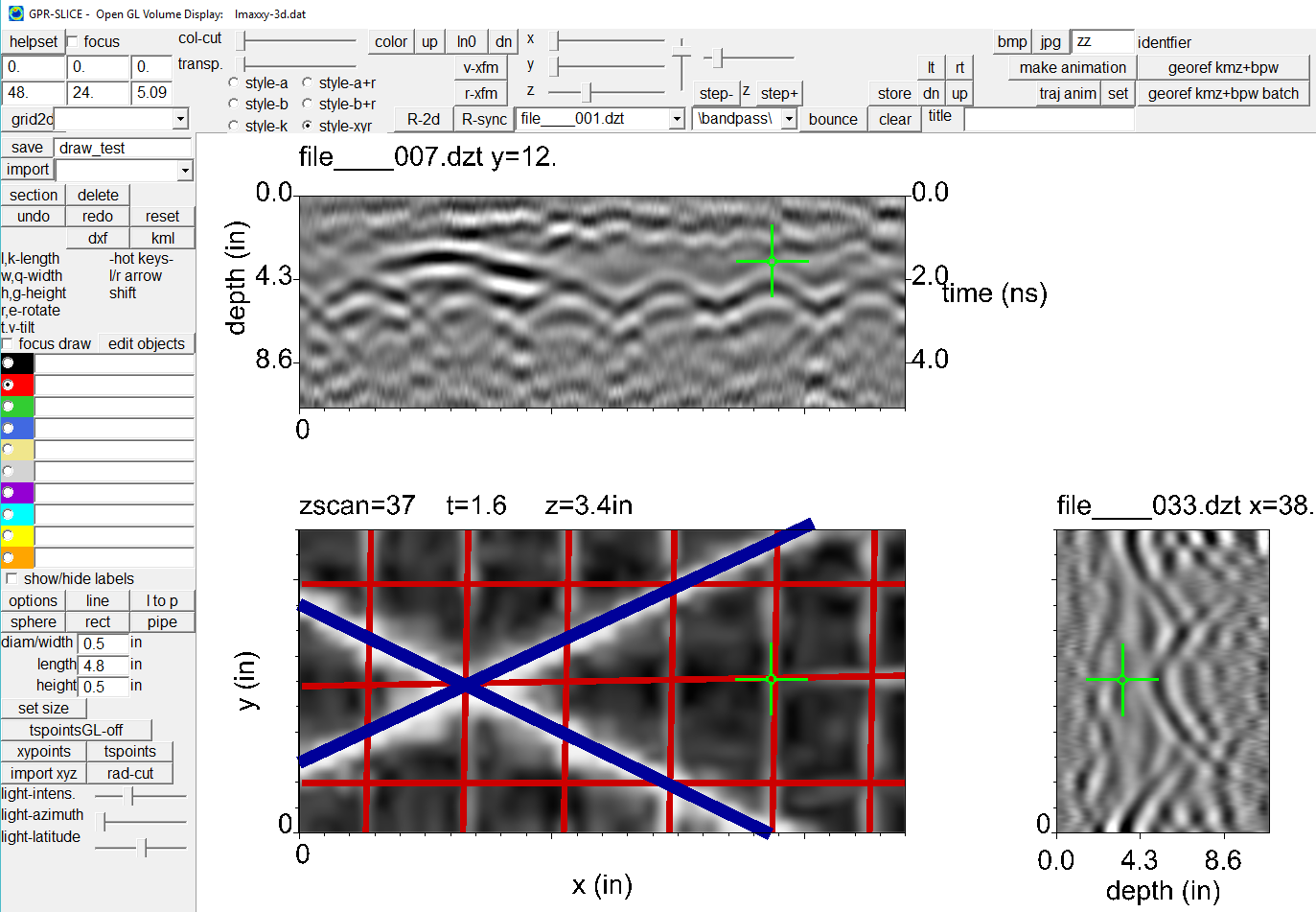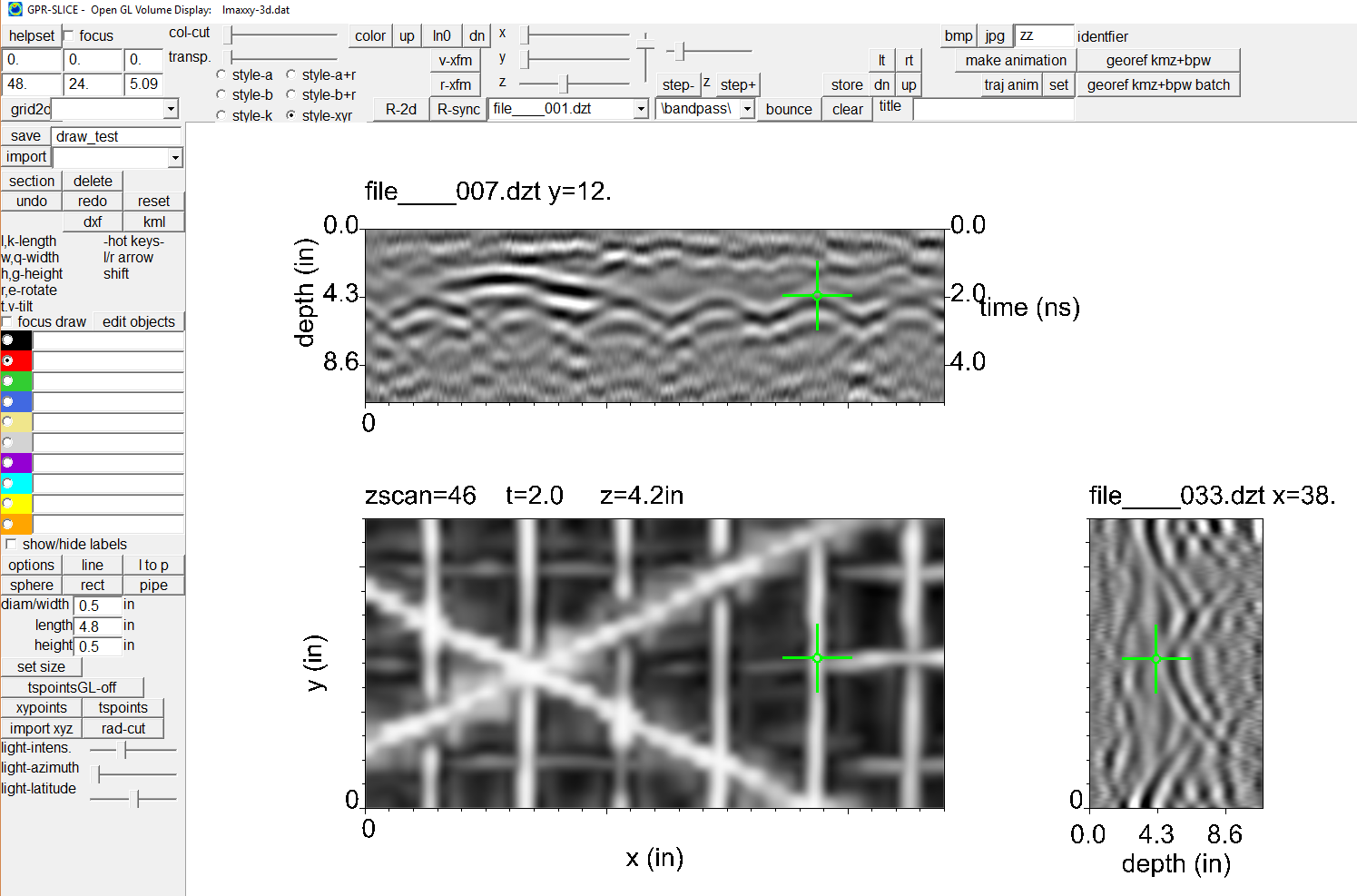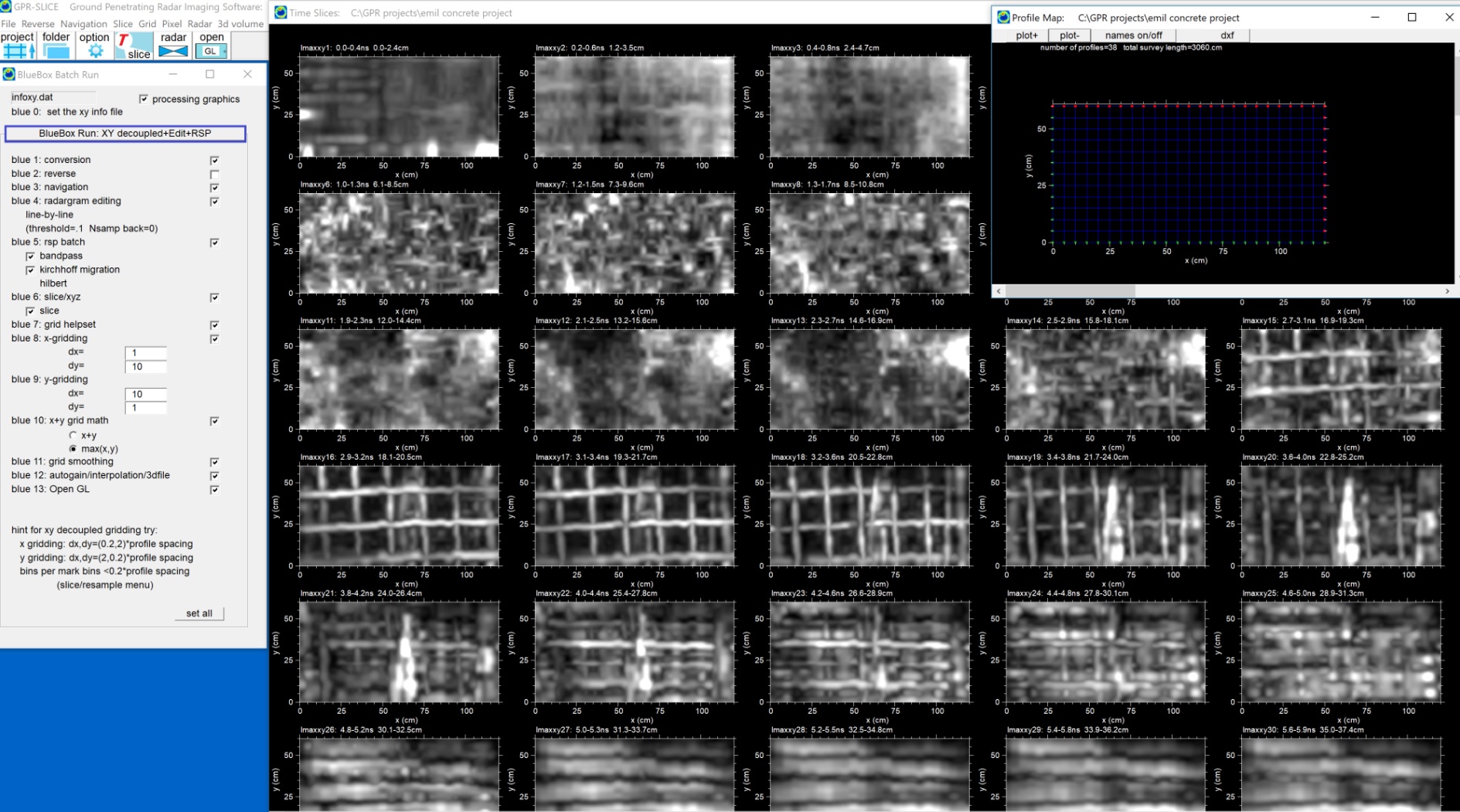GPR-SLICE has BlueBox Batch operations where a with one button click all the processing from radargram signal processing to xy decoupled gridding and 3D volume creations can be generated via a complete macro. BlueBox Batch runs are useful after a template of desired processing is created in the menus. All the same processes can be run on similarly recorded surveys and is particularly suited for concrete surveys where identical grids are recorded.
GPR-SLICE OpenGL Volume XYZ-2D menu can be used to show the active Zscan volume slice, as well as showing any radargram folder from which the processed volume was generated. In this example, the Zscan volume slice was made from time 0 corrected, bandpassed and gained, background filtered, kirchoff migrated and Hilbert transform - with the X and Y radargrams synced in the display from the bandpass folder.
GPR-SLICE OpenGL Volume XYZ-2D menu can be used to draw utilities and rebar on top of the Zscan slices while viewing the X and Y radargrams simultaneously. The OpenGL Volume drawing can also be done real time in the 3D Volume menu as well, with export to AutoCad dxf format.


GDr. Guido Tronca with GT Studio in Italy, imaged different levels of rebar and concrete structures with GPR-SLICE (www.gtstudioservice.it)

Dr. Gianluca Catanzariti with 3DGeoimaging used the GPR-SLICE hyperbola detection menu to automatically detect reflections from rebar in concrete along a bridge. The peak rebar responses, depth to rebar, along with regression analysis to estimate velocity are used to generate maps in the Grid menu for corrosion analysis and velocity variability/dielectric changes across the bridgedeck.

